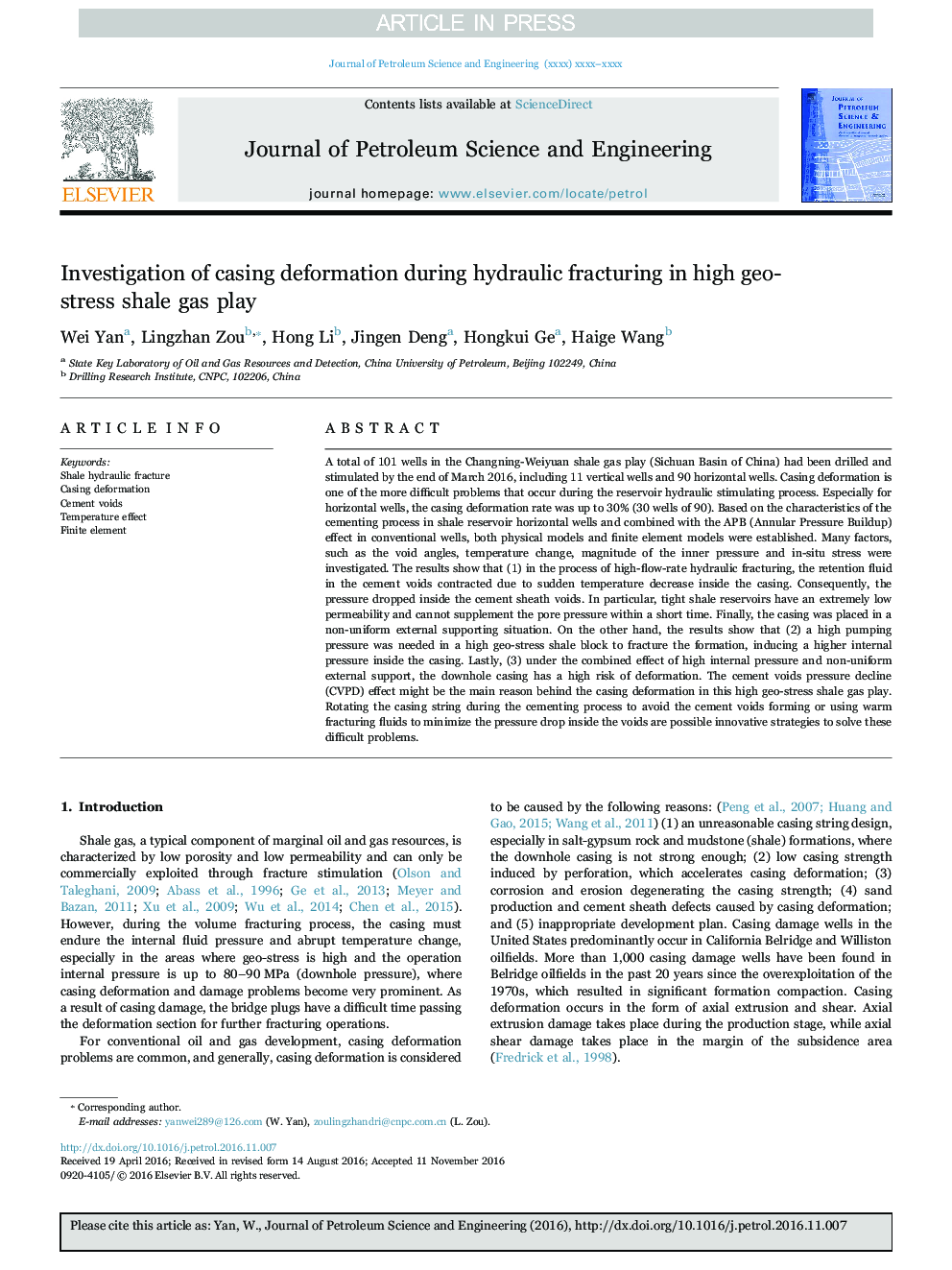| Article ID | Journal | Published Year | Pages | File Type |
|---|---|---|---|---|
| 5484315 | Journal of Petroleum Science and Engineering | 2017 | 8 Pages |
Abstract
A total of 101 wells in the Changning-Weiyuan shale gas play (Sichuan Basin of China) had been drilled and stimulated by the end of March 2016, including 11 vertical wells and 90 horizontal wells. Casing deformation is one of the more difficult problems that occur during the reservoir hydraulic stimulating process. Especially for horizontal wells, the casing deformation rate was up to 30% (30 wells of 90). Based on the characteristics of the cementing process in shale reservoir horizontal wells and combined with the APB (Annular Pressure Buildup) effect in conventional wells, both physical models and finite element models were established. Many factors, such as the void angles, temperature change, magnitude of the inner pressure and in-situ stress were investigated. The results show that (1) in the process of high-flow-rate hydraulic fracturing, the retention fluid in the cement voids contracted due to sudden temperature decrease inside the casing. Consequently, the pressure dropped inside the cement sheath voids. In particular, tight shale reservoirs have an extremely low permeability and cannot supplement the pore pressure within a short time. Finally, the casing was placed in a non-uniform external supporting situation. On the other hand, the results show that (2) a high pumping pressure was needed in a high geo-stress shale block to fracture the formation, inducing a higher internal pressure inside the casing. Lastly, (3) under the combined effect of high internal pressure and non-uniform external support, the downhole casing has a high risk of deformation. The cement voids pressure decline (CVPD) effect might be the main reason behind the casing deformation in this high geo-stress shale gas play. Rotating the casing string during the cementing process to avoid the cement voids forming or using warm fracturing fluids to minimize the pressure drop inside the voids are possible innovative strategies to solve these difficult problems.
Related Topics
Physical Sciences and Engineering
Earth and Planetary Sciences
Economic Geology
Authors
Wei Yan, Lingzhan Zou, Hong Li, Jingen Deng, Hongkui Ge, Haige Wang,
